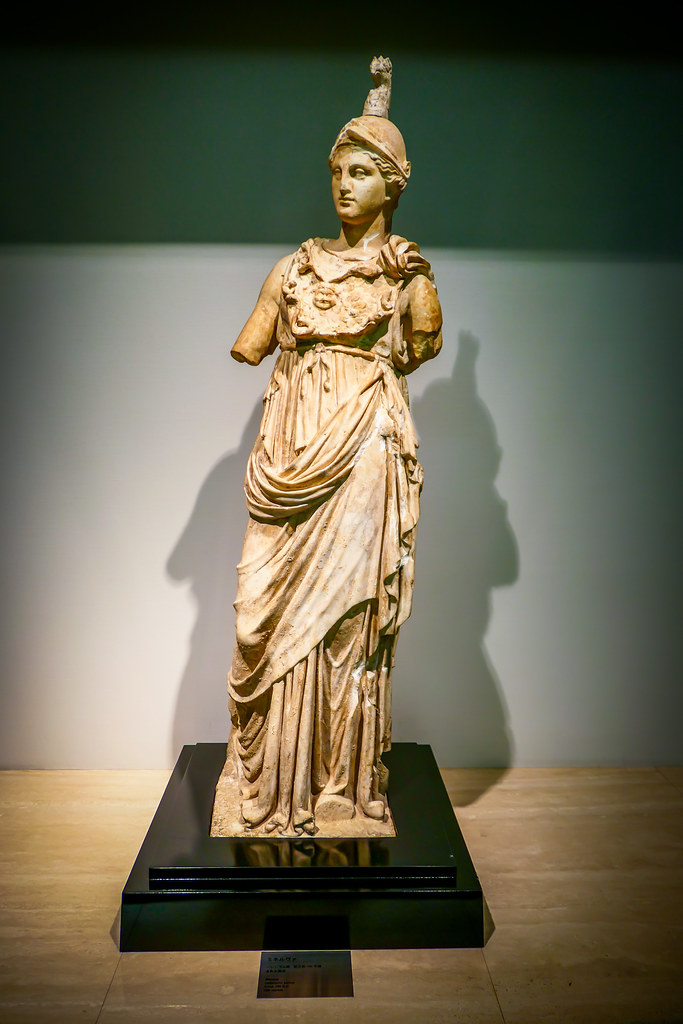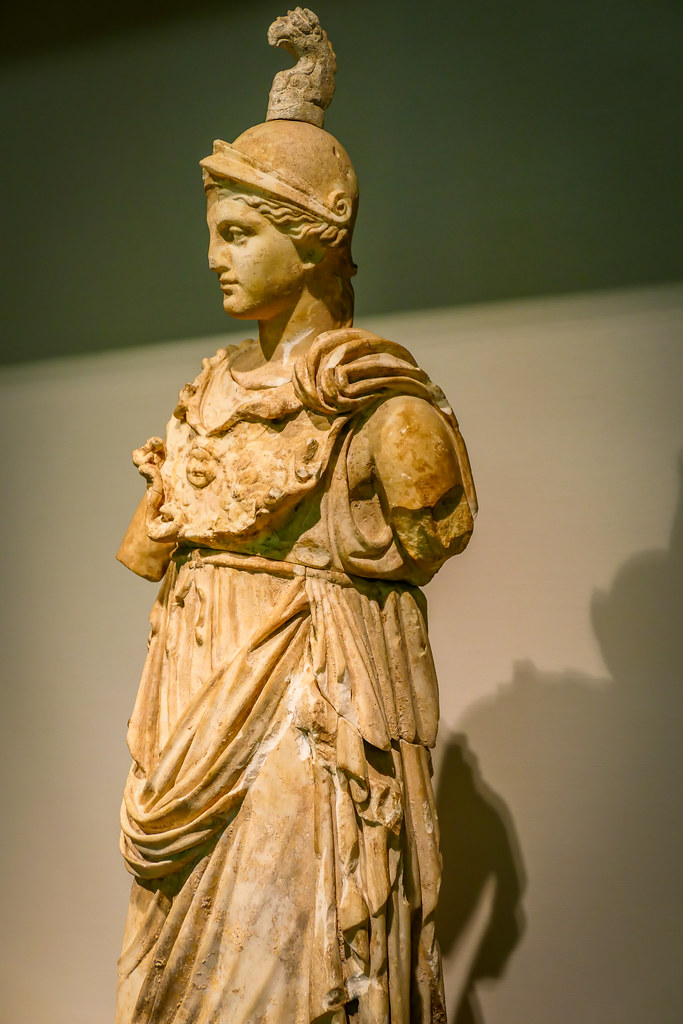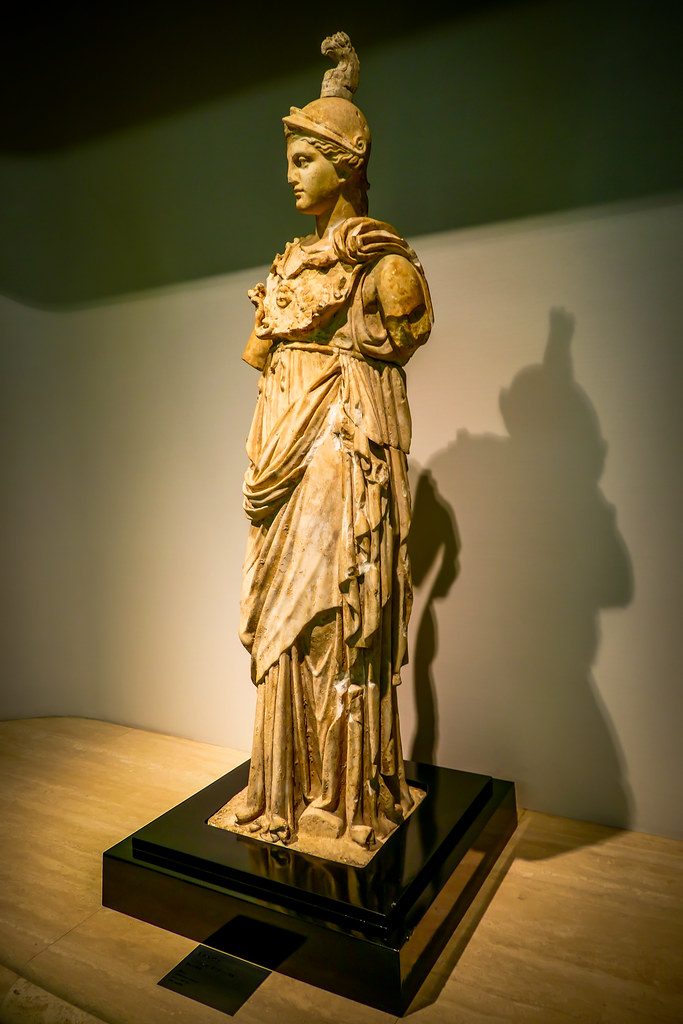
One of my favorite sculptures at the Matsuoka Museum of Art in Meguro is “Minerva”.
The statue is made of gilt marble and created back in the Hellenestic period (ca. 100 B.C.) and was excavated from the suburbs of Rome.
Minerva was the Roman goddess of wisdom, crafts and arts, but Athena was seen as the goddess of war and strategic combat.
The Romans looked at as similar to the Greek goddess, Athena. But both are very different in terms of Roman and Greek mythology.
The Romans did not consider Minerva a War Goddess (Romands had Bellona), the Greeks believed Athena as one. In fact, the Romans saw her more of a goddess of the arts. And in Roman mythology, the owl was sacred to Minerva.
Minerva’s story is actually quite fascinating. She was born of Metis (first spouse of Zeus a.k.a. Jupiter, the king of the gods, and who saw his wife Metis as a threat as it was prophesied that Meta would bear extremely powerful children who would be more powerful than Zeus and overthrow him).
Zeus would then turn Minerva to a fly and try to kill her by swallowing her, but it was too late as Metis in fly form, would forget armor for baby.
But Zeus agonized with the pounding in his head which was ringing in pain, led to Vulcan taking a hammer and splitting his head open in which Minerva came out as an adult, clad in a helmet and armor.
And Minerva is often featured in statues, logos, medals and even the Seal of California features the goddess, Minerva and is also featured on the Medal of Honor, the highest military decoration award by the U.S. government.



While the Minerva sculpture at Matsuoka Museum of Art is missing both her arms/hands, it’s still a statue I can’t help but spend a lot of time observing and seeing the detail that went into building this statue.
The detail on the clothing is fantastic but there is one part of the sculpture that caught my interest and it pertains to her armor. Looking close up, I think that is Medusa on the front.
While in Greek mythology, it was Athena that provided the shield that allowed Perseus to defeat Medusa. It was also Minerva who turned Medusa’s hair to serpents when she told Minerva that she was jealous of her because she was so pretty.
But it can get a little confusing as many tend to mix both Roman and Greek mythology as Minerva and Athena have so many similarities.
But nevertheless, the Minerva sculpture is fascinating and a wonderful sculpture that draws your attention at the Matsuoka Museum of Art in Meguro.
